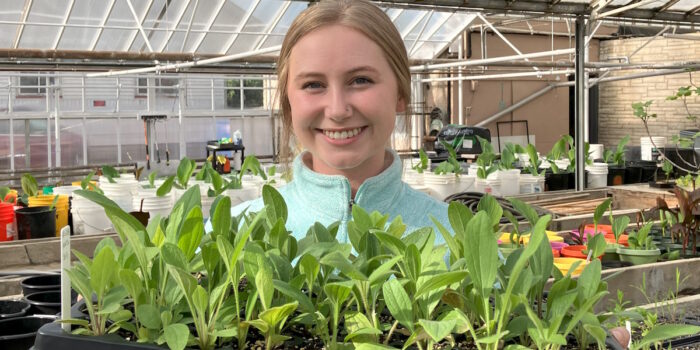
Intern Digs Deep into Native Plants Initiative
In this employee spotlight, we explore the journey of Jillian Lemons, a Youngstown State University Environmental Science student whose passion for native plant conservation has found a nurturing ground at the Land Bank.
Q: Tell us a little about yourself.
A: I’m Jillian Lemons and I’m an Environmental Science student at YSU. I moved here from Texas in 2021 and immediately fell in love with all the greenery and wildlife.
Q: Tell us what sparked your interest in employment here?
A: After seeing the immediate impact of a wildflower garden in our own yard I began looking for ways to get involved in the community with planting native wildflowers. Through my professor, I was introduced to the Mahoning County Land Bank, where my interests have flourished.
Q: What do you do here?
A: I began volunteering in the greenhouse last year and loved getting to further develop an interest in native plant species. It was so rewarding getting to see the seedlings start sprouting up and then seeing the locations where they were transplanted. After the Western Reserve Health Foundation approved the Land Bank’s grant to continue this work, I was able to return as greenhouse assistant to do even more than we could last year.
This year, as the greenhouse assistant, I’m responsible for planting and maintaining the native plants as they grow. I’ll be with these plants from the time they were seeds through when they will be transplanted into various properties owned by the Land Bank and other partners. This season, more than 8,000 native seeds have been planted by hand and most are looking like they’ll make it to transplant season. I look forward to continuing my work with the Land Bank and seeing the re-establishment of native plants in our area.
Q: Tell us more about the specific native plant species you’re working with and why they are important for the local ecosystem.
A: We have planted various native mints and sages, which have strong scents that deter deer from browsing on them and will help re-establish native plant coverage. The plants I’m most excited about are the flowers. Specifically, Common Milkweed and Ashy Sunflowers. Milkweed is the only source of food and habitat for endangered Monarch butterflies and both flowers provide for other pollinators. Sunflowers are also my favorite flower so I’m very excited to see how this native species of sunflower looks. Additionally, we have a few pea and bean species that act as natural fertilizers by immediately adding nitrogen to the soil. From the soil and roots to the food and habitat they provide, the native species each play a role in supporting a well-rounded local ecosystem.
